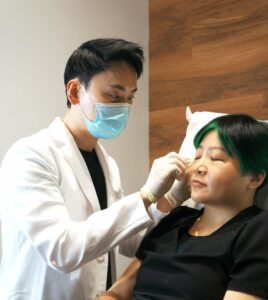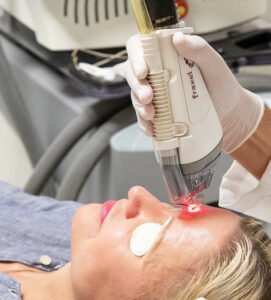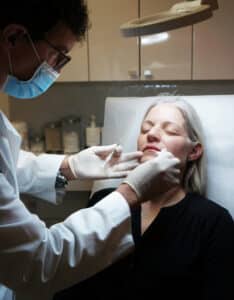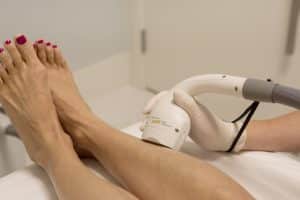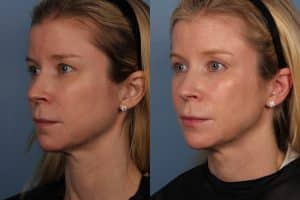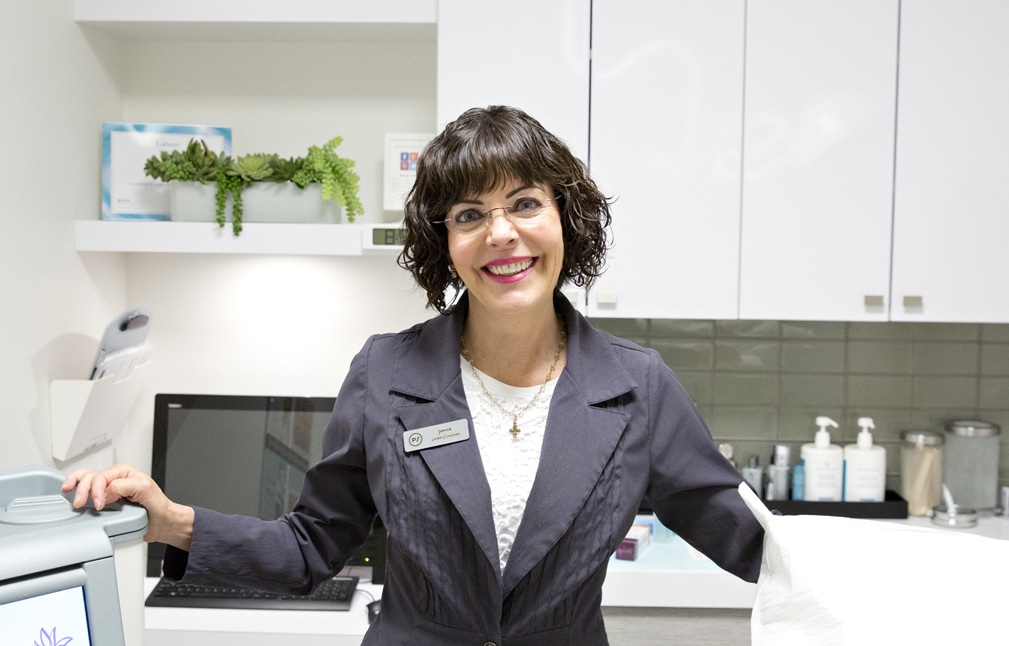
Having been diagnosed with acne rosacea at 30 years old (some 25 years ago, yikes!) and researching this skin disorder, I knew I was in for a long haul of trying to control this chronic condition that was bestowed on me. Acne rosacea is characterized by intense and frequent flushing, and the appearance of broken blood vessels on the cheeks, chin and nose. I also had acne-like pimples in these areas as well.
Firstly, I needed to discover my triggers. What were the internal and environmental factors that made my skin blush to the colour purple, and break out in hundreds of tiny pustules that seemed to produce and multiply daily? It’s important to note that once you have been diagnosed with rosacea it is essential that you find the triggers that make you flush. They can be different for each individual. The common triggers are sun exposure, red wine – and for me red plums – and heat, such as hot or steam baths, saunas, hot yoga, hot drinks and warm environments. Cosmetics and skincare containing high levels of alcohol or acetone, as well as fragranced products can also be culprits. Even emotional/physiological triggers, such as anxiety, embarrassment, stress, menopause and physical exertion can inflame the skin.
Early on, I was given the timely advice that I needed to control the inflammation, i.e., the flushing, in order to control the disorder or rosacea could wreak havoc on my skin! I was given oral antibiotics, along with the topical antibiotic metronidazole, to help get my skin under control while I did my investigative work to find my triggers.
I then needed to find skincare products that could help alleviate this condition from the outside. Not an easy task! Rich emollients were a problem for the acne component of my rosacea. Cleanser selection became particularly important, as I needed to remove my makeup and sunscreen thoroughly without over sensitizing my skin. Physical sunscreen containing zinc oxide is comfortable on my skin. I like that they reflect UV rays off the skin rather than absorbing the UV and turning it into heat energy as the chemical sunscreens do. Also, I find it helpful to change my skincare products slightly in different climates. Warm dry climates affect my rosacea as do warm moist climates. The right consistency of products makes a difference in these environments.
I could tell you exactly what I use for skincare but I may do you a disservice, as what works for my rosacea will not necessarily work for you. I will, however, tell you my skincare staples that I would not be without. Topical vitamin C serum composed of pure L ascorbic acid. No substitutions! My dermatologist advised that I apply vitamin C serum every day without exception 20 years ago. I have stuck with it all these years. For rosacea skin, vitamin C serum is very instrumental in helping control the inflammation of the disorder. It also helps ward off free radicals in the environment that penetrate through our already compromised skin barrier. I apply this serum in the morning after my metronidazole gel that I mentioned earlier. Lastly, I apply a physical sunscreen and makeup. At night I use a low dose retinol .05% to keep the rosacea pimples at bay.
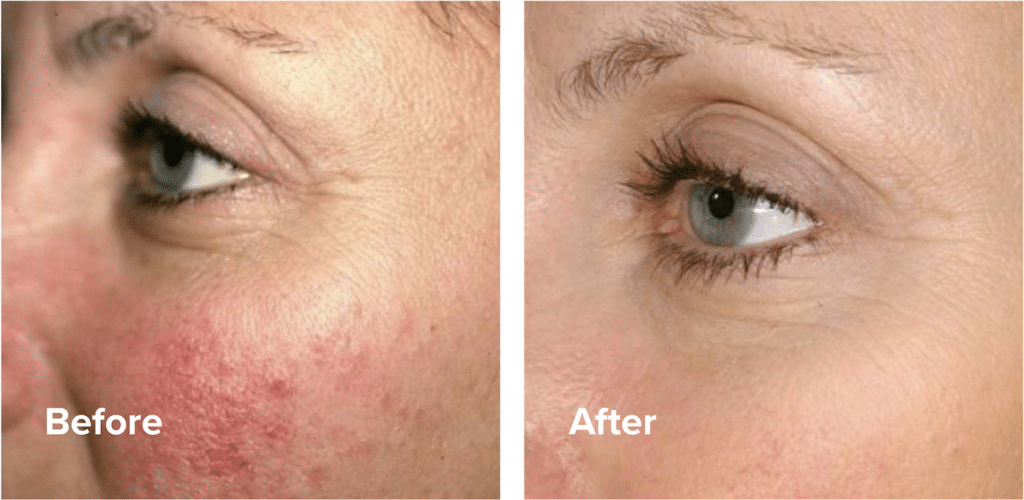
Before and after Laser Genesis treatment for rosacea.
As far as cosmetic treatment options are concerned, I must say that the vascular lasers for facial redness have been very instrumental in controlling my disorder. These cutting-edge lasers have dramatically reduced the persistent redness in my skin. A series of 5 to 6 treatments spaced at 4 to 6 weeks apart is advised for inflammatory rosacea. I would advise to start on the vascular treatments as soon as possible after your diagnosis. Remember, we need to control the inflammation in order to control the disorder. Rosacea is a chronic disorder so you may need maintenance treatments a few times a year. Skincare products help control ours skin’s outer environment, while vascular lasers help control the inflammation from within by shutting down the flushing, blushing vessels.
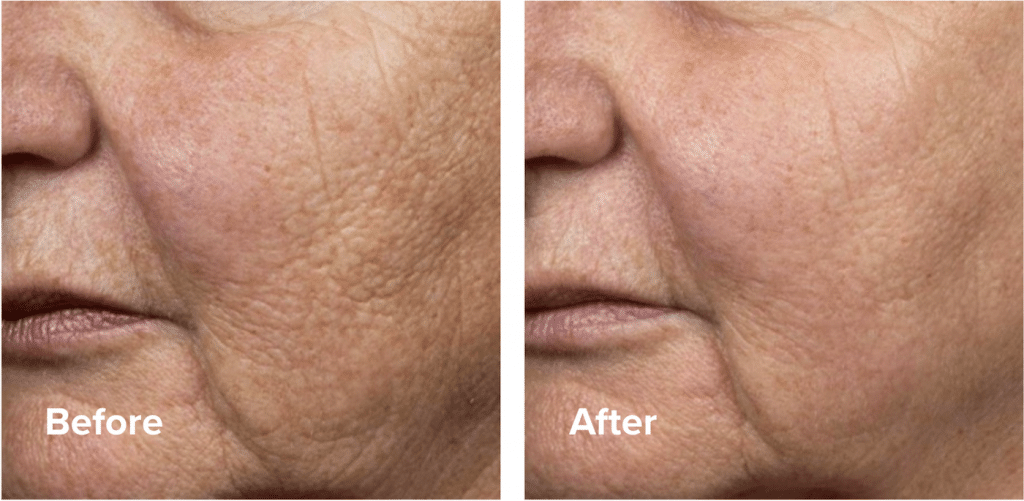
Before and after Fraxel treatment.
Lastly, I have to give the Fraxel® re:store DUAL non-ablative fractionated laser a lions’ share of credit for literally transforming my skin. Although it does not treat redness per se, I am much less red after having just two treatments! The laser heat and light may have killed the demodex folliculorum mite, which is theorized as an infectious component living in rosacea skin. This is my theory as my skin is much more resilient to flushing than before the treatments. The Fraxel® re:store DUAL also removed a thick layer of dead skin cells and sun damage, which allows my skincare products to penetrate to the fullest extent.
I hope this information has been helpful to you. Please don’t hesitate to contact me by clicking below if you would like any more information. Remember, find those rosacea triggers!
Regards,
Janice Coplin

